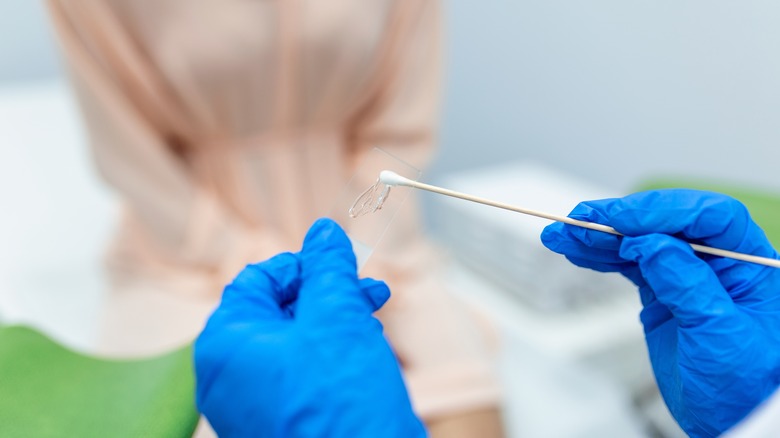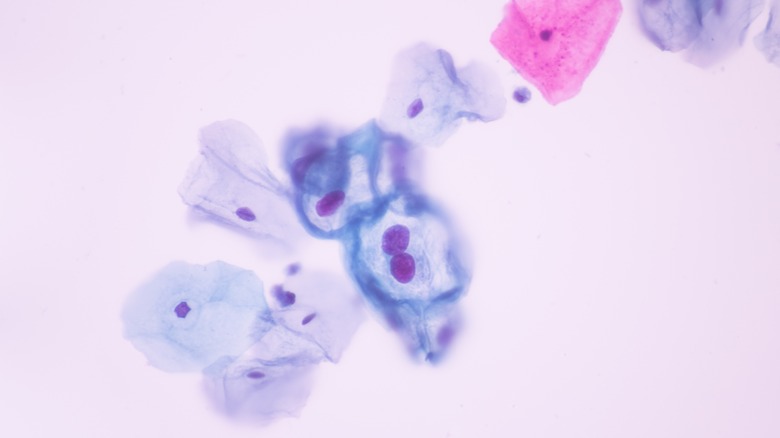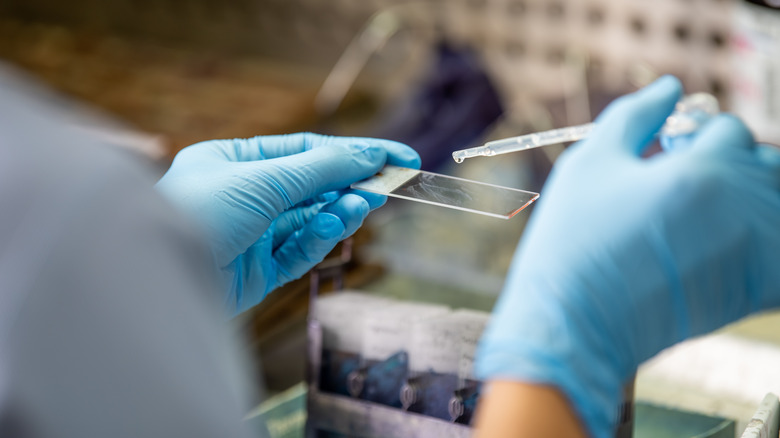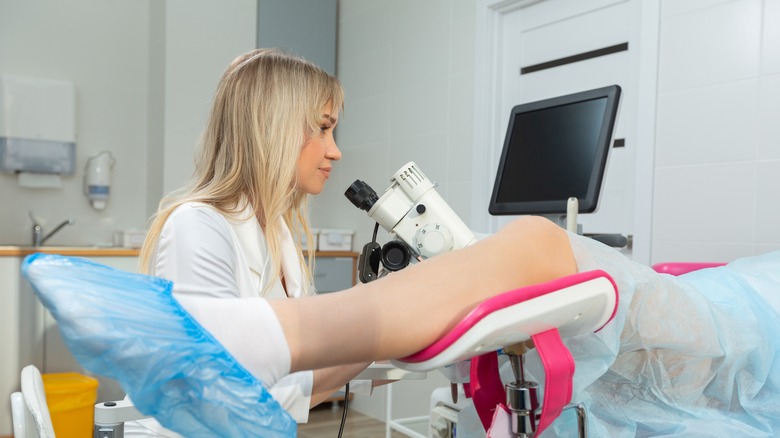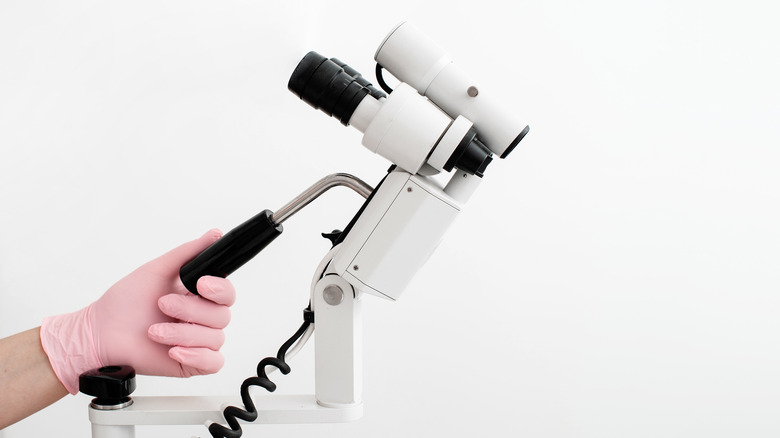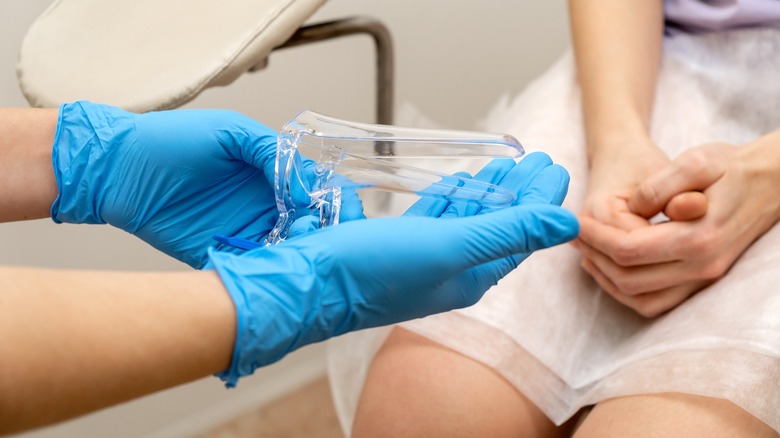All About Abnormal Pap Smear Results And The Next Steps You Should Take
Want to learn more about Pap smears and the test results that accompany them? You might be wondering what to do if you have recently gotten a Pap smear at your doctor's office and the result came back negative. On the flip side, you might simply want to be prepared if you are about to get a Pap smear.
Abnormal Pap smear results might seem scary and confusing, but most of the time, these results are not caused by anything serious like cervical cancer. There are many different kinds of abnormal Pap smear results, conditions that can cause them, and symptoms that go hand in hand with conditions that cause abnormal results.
Luckily, there are steps you can take after receiving an abnormal Pap smear. Albeit, these next steps might differ if you are currently going through menopause. There are also steps you should pursue if your doctor finds you have a vaginal infection or if you test positive for HPV. Here is everything you need to know about abnormal Pap smear results and the next steps you should take after receiving your results.
What is a Pap smear and how often should you get them?
First things first: What exactly is a Pap smear? Also known as a Papanicolaou test, a Pap smear is a test that doctors use to look for any signs of cell change on the cervix (via the National Cancer Institute). The Pap smear is typically performed during the pelvic exam, and the doctor uses a "small brush" to take cells from the cervix's surface and the surrounding area. These cells are then viewed for changes or potential cancer under a microscope. These cell changes can potentially lead to cervical cancer, so adult women should get regular Pap smears to check for any cell changes.
According to the American College of Obstetricians and Gynecologists, women in their 20s should get a Pap smear test by itself at least once every three years. If you are between the ages of 25 and 29, you can consider getting tested for human papillomavirus, also known as HPV, in lieu of a Pap smear at least once every three years. That being said, most doctors prefer that you get Pap smear tests regularly throughout your 20s.
If you are between 30 and 65, you can get a Pap smear test by itself at least once every three years, an HPV test by itself at least once every five years, or both a Pap smear and an HPV test at least once every five years. Past the age of 65, women no longer need to receive these screening tests if they have had at least two or three consecutive negative tests and have never had abnormal cervical cells or cervical cancer.
What does an abnormal Pap smear result mean?
If your Pap smear result comes back positive or abnormal, your physician has discovered "unusual or abnormal cells in your cervix," according to WebMD. However, this is not automatically a cause for alarm since an abnormal Pap smear result doesn't necessarily indicate that you have cervical cancer. There are a few different kinds of abnormal Pap smear results. Atypical squamous cells of undetermined significance (ASCUS) is one of the most common types, and it means that the doctor has found unusual cells in the lining tissue on the external surface of the cervix. ASCUS can indicate several conditions, including HPV, a yeast infection, low hormone levels, benign growth, or inflammation. Your doctor will run more tests to narrow it down.
Squamous intraepithelial lesions are typically caused by HPV, and, according to The National Cancer Institute, they "usually go away on their own without treatment," but not all the time. These lesions are called either "high-grade" or "low-grade." Low-grade lesions may not become cancerous for years, while high-grade lesions can become cancerous in the near future. Your physician will most likely order a colposcopy test to check for cervical cancer and other signs of disease. Another result is atypical glandular cells (AGC), which WebMD notes can indicate cervical cancer. Your physician will most likely order a colposcopy test to check. Squamous cell cancer or adenocarcinoma cells are the most abnormal result and tend to be a sign of cervical cancer. In this case, your physician will most likely order both a colposcopy and a biopsy.
The most common causes of abnormal Pap smear results
The most common cause of an abnormal Pap smear result is cell change to your cervix because of the human papillomavirus, also known as HPV. But other common causes of abnormal results, according to Tampa General Hospital, include sexually transmitted infections (STIs), yeast or bacterial infection, inflammation of the pelvic area, and "normal cellular changes that occur with age."
The most common STI, HPV, can often lead to health issues like cervical cancer or genital warts (per the Cleveland Clinic). You can contract HPV through oral, anal, or vaginal sex with another person with HPV, even if they don't have any symptoms and no bodily fluids are exchanged. HPV usually disappears within two years without causing any health issues, but if it doesn't clear up on its own, it can lead to conditions like genital warts or cancer of the anus, vagina, vulva, tongue, or tonsils.
Trichomoniasis (or trich) is another common STD that can cause an abnormal Pap smear. It's an infection of the lower genital tract, including the urethra, cervix, vagina, or vulva. Genital herpes is another common STI that is usually asymptomatic but can lead to mild to severe ulcers or blisters on the genitalia. Vaginal yeast infections, also known as vaginal candidiasis, are fungal infections sometimes linked to sexual activity and can cause symptoms like itchiness, discharge, and irritation of the vulva and vagina.
Symptoms of conditions that cause Pap smear results
Some of the conditions that lead to unusual Pap smear results can cause some painful or uncomfortable symptoms, depending on the infection or disease. The symptoms may include pain or soreness in your vagina, rashes, bumps, warts, or sores in the genital area, unusual vaginal discharge, or itching, pain, or burning in the genital area during urination or sexual intercourse (per Everyday Health).
Even though HPV causes most abnormal Pap smear tests, the STI doesn't usually cause symptoms. However, the CDC notes that genital warts are a common symptom associated with the infection. Genital warts can be one "small bump or "group of bumps," and "they can be small or large, raised or flat, or shaped like a cauliflower."
If you notice any of these symptoms, make sure to stop any sexual activity and talk to your doctor about them right away. These symptoms are typically a sign of an STI or bacterial or yeast infection, which is why it's crucial to stop having sex for the time being, at least until you've been cleared.
Next steps following an abnormal Pap smear
Your next steps following an abnormal Pap smear result depend on a few different factors, but you will likely undergo a colposcopy to make a diagnosis. But don't panic! According to Roswell Park Comprehensive Cancer Center, 3 million women annually receive abnormal Pap tests, but "less than 1% (13,240 cases) will be diagnosed with cervical cancer."
Keep in mind that if you're going through menopause or post-menopausal, you might get abnormal Pap smear results for reasons related to menopause or aging. OB-GYN Dr. Jessie Mars tells Gennev, " ... after menopause, thinning of the vaginal and cervical tissue or changes in the vagina like inflammation or cervix related to thinning of those tissues can make the cells on the Pap appear to be abnormal."
Unfortunately, you will likely still need further testing to rule out HPV and other issues because it's impossible for your physician to know what exactly is causing the abnormal cells without diagnostic testing. That being said, some people do get false abnormal Pap smear results following menopause, so you can discuss with your physician how and when to undergo follow-up testing if this happens.
What is a colposcopy?
A colposcopy is a minor diagnostic procedure used to further visually examine your cervix for any signs of disease, using "a special instrument called a colposcope" (via the Mayo Clinic). The colposcope is a low-powered microscope that the doctor uses to look for any unusual-looking areas in the cervix that could potentially lead to cancer. If the physician finds any abnormal areas in the cervix, they can biopsy those tissue areas to see if they are cancerous.
Wondering what happens next if the colposcopy comes back abnormal as well? The colposcopy might show some mild cervical dysplasia, or "cells that could become cancer if not treated," according to the Cleveland Clinic. In this case, your doctor will ask you to "repeat the Pap test periodically" since it may "go away on its own."
You will likely need to repeat the Pap smear test at least once per year (or whatever your physician recommends) for a few years until you receive at least two or three abnormal Pap smear results. On the other hand, if the colposcopy shows more advanced precancerous cells, there are luckily several treatment options you can take that your doctor will recommend.
What to expect before, during, and after a colposcopy
You don't need to do anything special to prepare for your colposcopy, but there are a few things you must avoid, says Cleveland Clinic. For instance, you should not have sex, douche, or put any tampons or other products into your vagina. You should also let your nurse or physician know if you are pregnant or might be pregnant. You should also try to avoid scheduling the procedure during your menstrual cycle since menstrual bleeding can obscure the cervix and keep the physician from making a proper diagnosis.
During the procedure, your doctor will place a speculum into your vagina and apply an "acetic acid solution" to highlight any changes to the cervix. This might burn slightly, but the overall procure is minimally painful. The entire procedure usually takes no more than 20 minutes. You might see a little spotting or vaginal discharge after the procedure. The doctor will send any biopsies from the procedure to a pathologist, and the results typically take one to four weeks to return.
Loop electrosurgical excision procedure (LEEP)
If the colposcopy shows any advanced precancerous cells, there are several treatment options you can take. One of the most common treatment options following an abnormal colposcopy is a loop electrosurgical excision procedure, also known as LEEP. According to the American College of Obstetricians and Gynecologists, the LEEP treatment removes abnormal cells from your cervix and stops them from "developing into cervical cancer."
During this procedure, your doctor will put a speculum into your vagina and likely use local anesthesia to numb the area. They will then place a tiny wire loop with an electric current attached through the speculum and pass it over the cervical tissue to remove a tissue layer of precancerous cells. "You may feel pressure, a dull ache, or a cramp," the ACOG notes.
The doctor will then apply a "special paste" to your cervix to "stop any bleeding" and send the tissue to a pathologist for testing. Following the LEEP treatment, you might see a few symptoms, including mild cramping, a pinkish, watery discharge, or a brownish-black discharge. If you notice any severe abdominal pain, bleeding with clots, or heavy bleeding, make sure to reach out to your doctor right away
Other treatment options following an abnormal colposcopy
Other common treatment options after an abnormal colposcopy, where precancerous cells are likely, include laser surgery, cryotherapy, and a cone biopsy. A cone biopsy is a procedure that involves taking "a cone-shaped piece of tissue" from your cervix (via Cancer Research UK). This treatment option typically takes about 15 minutes, and you get a general anesthetic before the procedure, meaning you are asleep. After removing the tissue, the doctor sends it to a pathologist, who checks for cancer cells and ensures that all unusual cells have been removed.
Cryotherapy is another treatment option in which the doctor will "freeze and destroy abnormal tissue in the cervix," as explained by Mount Sinai. You will be awake during this procedure and might experience some "slight cramping" or pain. Your doctor will insert a speculum into the vagina and place a cryoprobe instrument onto the cervix's surface, "covering the abnormal tissue." Compressed nitrogen gas goes through the cryoprobe, making it cold enough to freeze and remove the tissue.
Finally, laser surgery involves using a carbon dioxide laser to vaporize the unusual tissue in the cervix and get rid of "abnormal cells" (via Cancer Council NSW). Following the procedure, you should avoid douching, sex, and wearing tampons for four to six weeks. You will also need to undergo another Pap smear test four to six months after the procedure.
How to reduce your risk for HPV and cervical cancer
No one wants to get cancer or HPV. Luckily, there are several different things you can do to decrease your chances of contracting HPV or cervical cancer, including getting regularly screened for cervical cancer, getting vaccinated, and taking precautions if you are sexually active.
GARDASIL 9 is an effective, safe, and FDA-approved vaccination that protects against the most common strains of HPV, as well as cancers and other diseases caused by HPV. The CDC recommends that all preteens, ages 11 to 12, receive the HPV vaccine, but anyone can get the HPV vaccine "through age of 26" if they are not already vaccinated. While it's not recommended over 26 years old, the CDC notes that people between 26 and 45 "might choose to get HPV vaccine after speaking with their doctor about their risk."
You should also take precautions when having sex to lower your risk of getting HPV, which can then lead to cervical cancer. Being mutually monogamous with your partner is one of the best ways to decrease your risk. This means you only have sex with one sex partner, and your sex partner only has sex with you. Properly and safely using condoms is another excellent way to reduce your chances of contracting HPV, but keep in mind that condoms might not completely protect you from HPV. You can further decrease your risk by avoiding smoking since smokers are at a much higher risk of getting HPV and cervical cancer (per the American Cancer Society).
Never skip your Pap smear test
Even if you get negative Pap smear results or negative colposcopy results this time, it's important that you never skip your Pap smear test since skipping even one can mean that you miss the signs of potential cervical cancer (via the National Cancer Institute). Regular Pap smear tests are essential to your preventative health care and ensure that you stay happy and healthy for years to come.
Make sure to get annual checkups with your gynecologist or doctor for preventative care and get Pap smear tests at least once every three years if you're in your 20s or every five years if you're between the ages of 30 and 65. If you do get an abnormal Pap smear test this time, your doctor will probably want you to repeat your Pap smear again next year rather than wait another three or five years. Once you are 65 and older, you can stop getting Pap smears as long as you have never had cervical cancer or abnormal cervical cells.
And remember, an abnormal Pap smear is not the end of the world. "On a worry scale of one to 10, this is a two," gynecologist Jennie Hauschka tells Tryon Medical Partners. "Come in for the additional testing, let a doctor explain it to you and it's all going to be fine! It should not be on your mind or cause you any worry. Very few people make it through their reproductive years without having an abnormal Pap smear."

